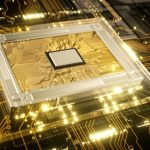In an article published by Advanced Science, researchers have introduced a highly adaptive miniature piezoelectric robot, drawing inspiration from the locomotion mechanisms of earthworms. The study titled “Development of a Highly Adaptive Miniature Piezoelectric Robot Inspired by Earthworms” showcases the robot’s ability to traverse a variety of surfaces. This new design leverages the principle of longitudinal-vibration-compound actuation enhanced by multilegged collaboration, allowing it to adapt to challenging environments. The device’s weight, size, and adaptability make it a promising candidate for applications requiring dexterous movement across complex terrains. The study also emphasizes the importance of these attributes in addressing the limitations faced by previous piezoelectric robots.
Piezoelectric robots are recognized for their compact structure, rapid response, and high-speed capabilities, yet they often struggle with adaptability due to limited foot amplitude. The new robot aims to overcome these challenges by utilizing circumferentially arranged driving feet, mimicking the actuation trajectories of earthworms. This design facilitates flexible movement and enhanced surface adaptability, addressing the problem of poor adaptability observed in earlier models.
Experimental Validation
The operating principles of the robot were validated through simulations using the finite element method, followed by the fabrication of a prototype. Weighing merely 22.7 grams and measuring 35.5 x 36.5 x 47 mm³, the robot is equipped to handle various surface types. When powered by an ultrasonic power supply, the robot demonstrated a speed of 179.35 mm/s under specific operational conditions. Its ability to move on flat, folded, concave, convex surfaces, as well as inclined or rotating tubes, was particularly noteworthy, confirming the effectiveness of its design.
Comparative Analysis
Comparing this recent development with past research reveals significant advancements. Previous piezoelectric robots often faced limitations due to their design, which restricted their adaptability to different surfaces. The use of micron-level amplitude at the feet was a notable drawback. However, the new robot, with its earthworm-inspired actuation mechanism, showcases a marked improvement in surface adaptability, enabling it to navigate complex terrains more effectively.
Earlier models lacked the multi-legged collaboration feature, which is now a key aspect of the new design. This addition allows the robot to maintain stability and flexibility, even on dynamically rotating tubes and inclined surfaces, a feat that was challenging for previous iterations. The improvement in speed and adaptability marks a significant leap in the field of miniature piezoelectric robots, as it opens up new possibilities for their application in diverse environments.
The development of this highly adaptive miniature piezoelectric robot represents a significant advancement in robotics. The integration of circumferentially arranged driving feet and longitudinal-vibration-compound actuation has successfully addressed the adaptability issues faced by earlier models. This innovation not only improves the robot’s movement on various surfaces but also enhances its potential for practical applications. As researchers continue to refine these designs, we can expect further improvements in both performance and versatility. Understanding the implications of these advancements could be crucial for fields requiring precise and adaptable robotic movement, such as medical devices, industrial inspection, and exploratory robotics.










